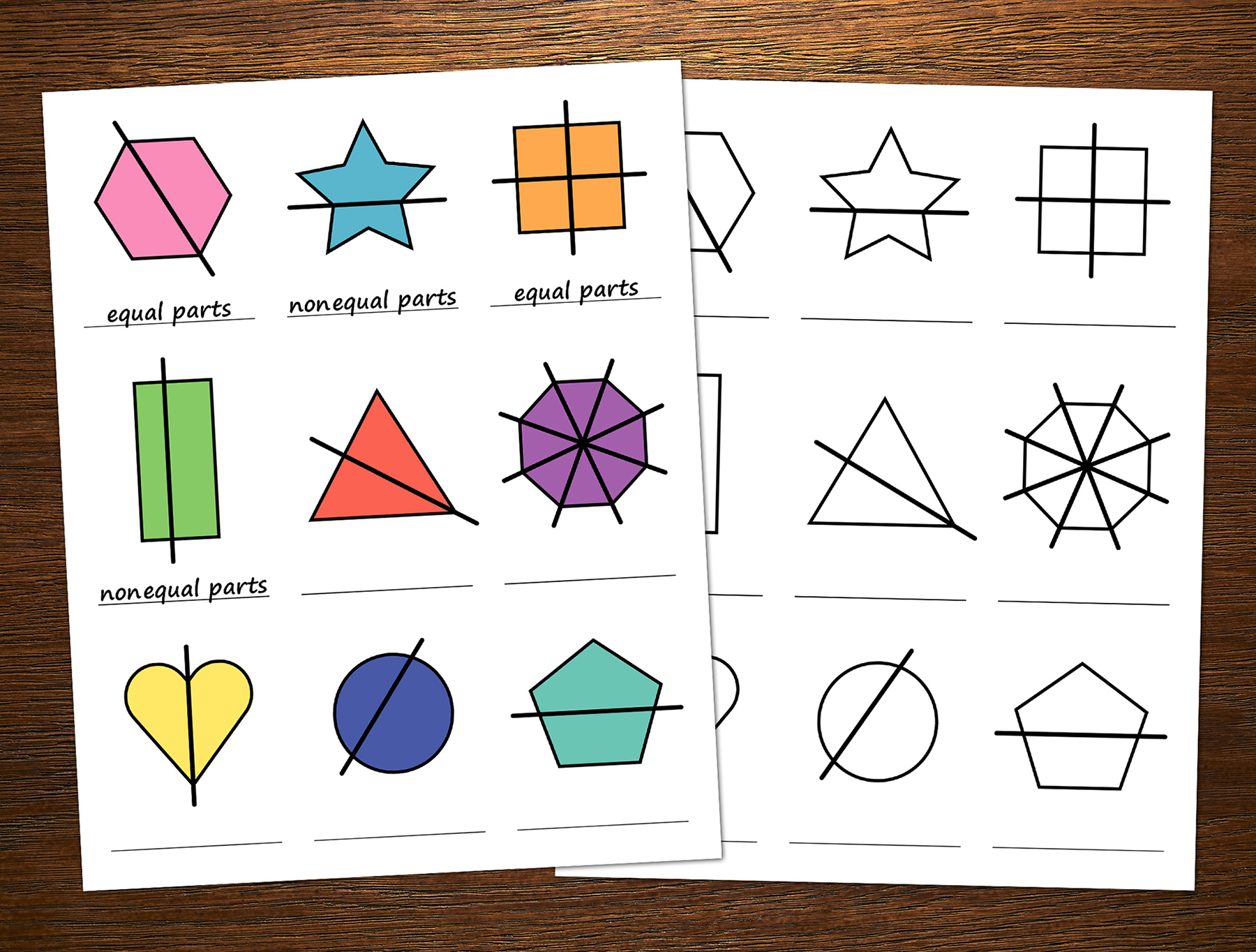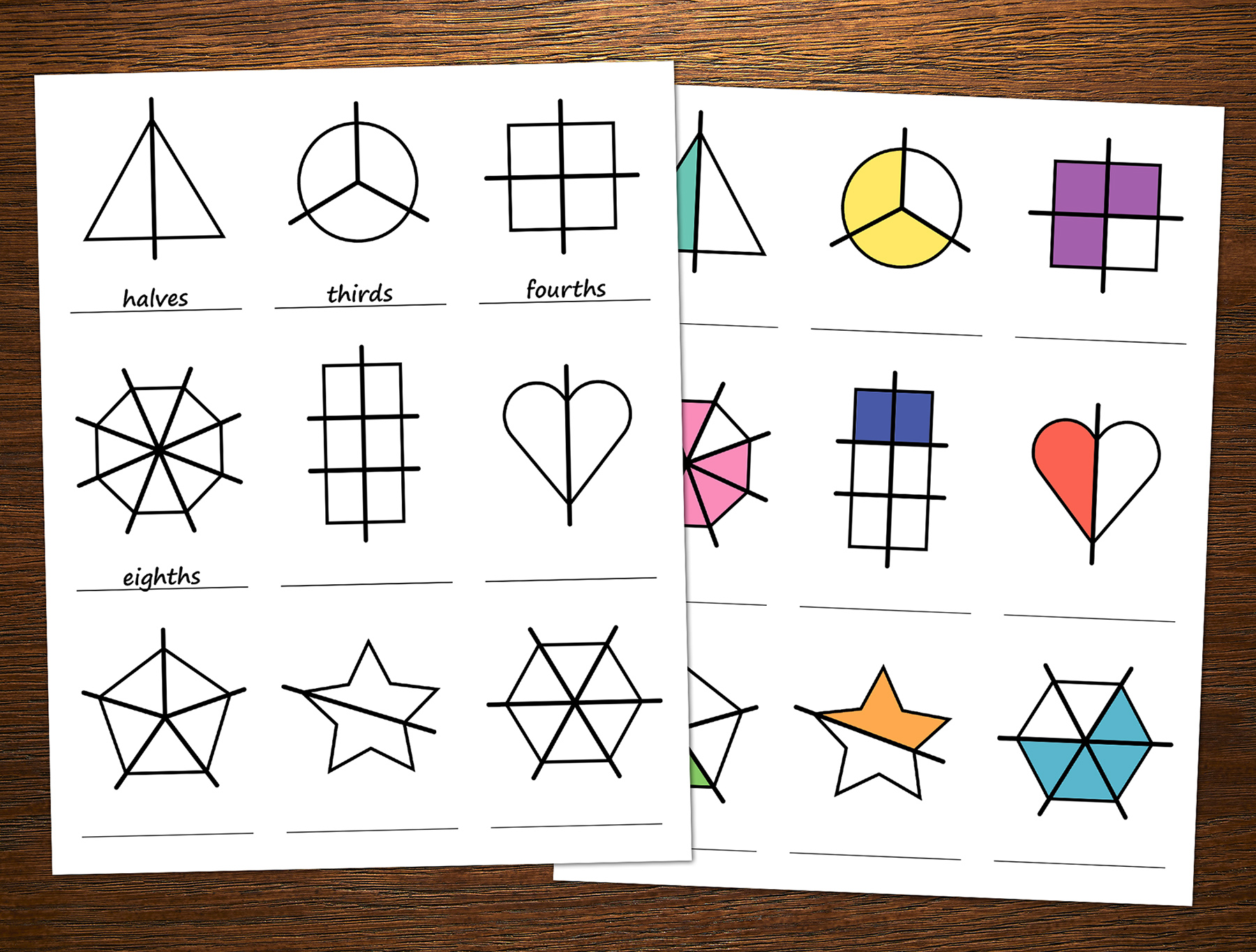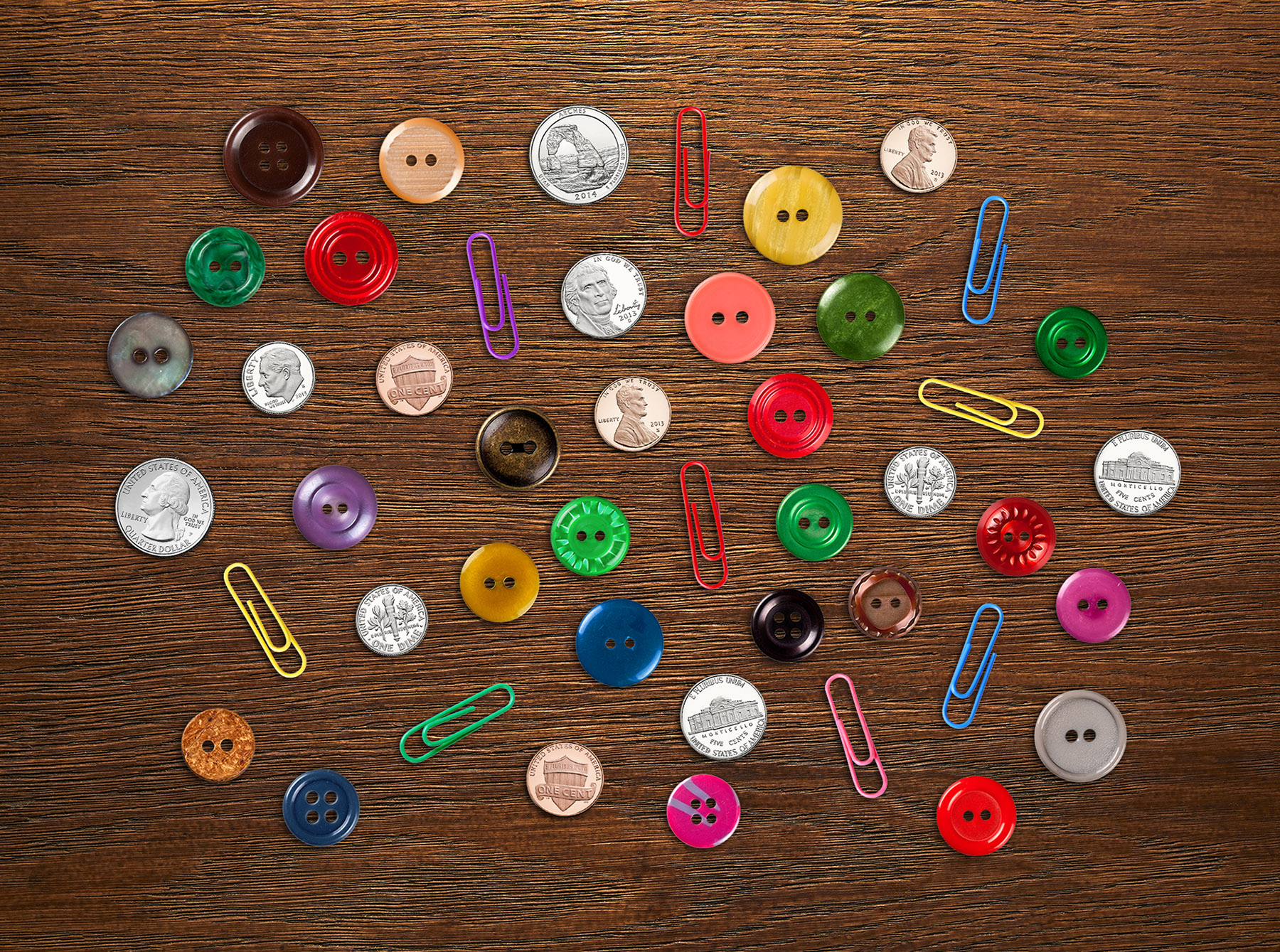
Introduce three basic fraction skills to your little learners with these hands-on math activities. In our latest blog post, we're featuring three fun math games that reinforce early fraction concepts. Learn about equal and non-equal parts, fractions of shapes, and fractions of sets with flexible, engaging activities that are perfect for the visual learner, kinesthetic learner, social learner, and just about every student in between! Read on to find out more.
These basic fraction activities are perfect for helping children understand fraction concepts in a dynamic, hands-on format. Modify any of these activities to suit the grade level and needs of your students. You will also find a variety of interactive fraction activities to compliment these hands-on games on iKnowIt.com. Remember to tag @iknowitcom on social media so we can check out your class's fraction fun!

In this activity, you will use your word processor's shapes tool to create shapes and divide them into equal or non-equal parts for your students to identify.
The prep work for this activity is very simple. First, you will create a document in your word processor containing a variety of basic shapes. You can make these shapes using the shapes tool. Feel free to make shapes of different sizes and colors. Next, you can either use the drawing tool or your free hand to divide the shapes into equal or non-equal parts. If you use your free hand, be sure to divide the shapes as accurately as possible to avoid confusion.
You will need to decide how in-depth you want to make this equal and non-equal parts activity. For example, you may wish your students to identify a shape as either having "equal parts" or "non-equal parts." Or, for the shapes that do have equal parts, you may want your students to identify whether the shape has "halves," "thirds," "fourths," etc. This will depend on the grade level of your students.
Provide one of the shape picture pages to each of your students and instruct them to distinguish the shapes with equal parts from those with non-equal parts. Students can label the shapes, color them with different colors, or otherwise identify the fractional parts of each shape.
You can do this activity together as a class, in small groups, or individually. Be sure to go over the answers together to maximize comprehension.

Here is another awesome math activity you can do with the shapes tool in your word processor.
You will set up this fraction activity the same way as the equal or non-equal parts game. Create a variety of shapes in a document using your word processor's shapes tool. Choose lots of different shapes and divide them all into equal, but different, fractional parts. For example, you may create a triangle divided into halves, a circle divided into thirds, and a square divided into fourths, among others. You can use the drawing tool or your free hand to divide the shapes into fractional parts, but if you use your free hand, be sure to take extra care to be as accurate as possible to avoid confusion.
Students will identify the different shapes by their fractional parts. You might instruct them to label the fractional parts represented by each shape: "halves," "quarters," etc. Or you may ask students to color or shade in a specific fractional part of each shape. For example, "Shade in one half of the triangle." Alternately, you could pre-shade fractional pieces of each shape and ask your students to identify which fraction of the shape is shaded: "What fraction of the square is shaded?" to which students would answer: "One-fourth."
However you choose to carry out this activity, the main focus should be your students' ability to correctly identify the different fractional parts of the shapes. Be creative and encourage your little ones to have fun with this one. Incorporate crayons, markers, or colored pencils to make the activity more exciting.

In this final activity, students will learn about fractions of sets with groups of objects you have in your classroom or at home.
You can use virtually any objects to create "sets" or "groups" for your students to work with. Office supplies, like colorful paper clips or post-it notes, prize items such as novelty erasers or stickers, or even craft supplies like buttons, pipe cleaners, or pom poms all work well. The groups of objects you create do not need to be identical (example: all paper clips or all buttons), but students should be able to easily identify a fraction of the group as having a shared characteristic.
You can provide one group of objects to each child or group of children, or simply display a group of objects on your overhead projector to discuss as a class.
Ask students to identify fractions of the set. Here are some examples:
You can see by these examples that you could use just about anything to create a group or set. As long as your students can clearly identify a fraction of the set as having a shared characteristic, your options are practically limitless.
Since there are so many ways to carry out these basic fraction activities with your class, the most important thing to focus on is which specific fraction skill you want your students to practice. Then tailor the activities you choose to that skill.
Pair this activity with the online basic fraction games featured on iKnowIt.com, and your students will be fraction masters in no time!
Did you try any of these fraction games with your class? Tell us all about it! Drop us a line in the comment section below. We love hearing from our readers! 😊